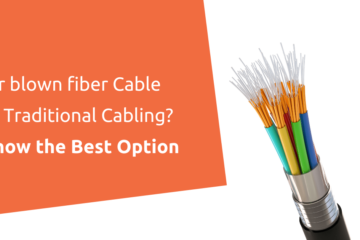
Lightning poses a significant threat to outdoor telecom equipment, necessitating comprehensive protection measures to safeguard assets and ensure uninterrupted service delivery. In this article, we delve into various aspects of lightning protection, exploring strategies, components, best practices, and emerging technologies to fortify outdoor infrastructure against lightning strikes.
Understanding the Risks
Outdoor telecom equipment, including antennas, towers, and cabinets, is particularly vulnerable to lightning strikes due to its exposed positioning and metallic composition. Direct lightning strikes can inflict severe damage, leading to equipment malfunction, data loss, and safety hazards. Moreover, secondary effects such as power surges and electromagnetic interference can exacerbate the impact, causing extended downtime and costly repairs.
Components of Lightning Protection Systems
- Lightning Rods: Also known as air terminals, lightning rods serve as focal points to attract and safely conduct lightning strikes to the ground, minimizing damage to surrounding structures.
- Surge Arrestors: Surge arrestors or transient voltage surge suppressors (TVSS) mitigate the impact of lightning-induced power surges by diverting excess voltage away from sensitive equipment.
- Grounding Systems: Grounding systems provide a low-resistance path for lightning-induced currents to dissipate harmlessly into the earth, preventing damage to equipment and ensuring personnel safety.
- Bonding Conductors: Bonding conductors establish electrical continuity between metallic components, ensuring uniform potential and minimizing the risk of electrical arcing or sparking.
Best Practices for Lightning Protection
Conduct thorough risk assessments to identify vulnerable areas and assess the potential impact of lightning strikes on outdoor equipment and infrastructure. Implement routine inspections and maintenance protocols to ensure the integrity and effectiveness of lightning protection systems. Adhere to industry standards and guidelines for the installation of lightning protection components, ensuring proper placement, grounding, and bonding to maximize efficacy. Incorporate surge suppression devices into critical infrastructure components to mitigate the risk of damage from lightning-induced power surges.

Advanced Lightning Protection Technologies
- Meteorological Sensors: Utilize advanced meteorological sensors and lightning detection systems to provide early warning of approaching thunderstorms and lightning activity, allowing proactive measures to protect outdoor equipment.
- Remote Monitoring: Implement remote monitoring and control systems to continuously monitor lightning protection systems and respond to potential threats or anomalies in real-time, ensuring swift intervention and mitigation measures.
- Predictive Analytics: Harness the power of predictive analytics and machine learning algorithms to analyze historical lightning strike data and identify patterns, enabling predictive maintenance strategies and risk mitigation measures.
- Lightning-Resistant Materials: Explore the use of lightning-resistant materials and coatings for outdoor equipment and infrastructure to enhance resilience and mitigate the effects of lightning strikes.
Additional Strategies for Lightning Protection
- Modular Design: Incorporate modular design principles into outdoor equipment and infrastructure to facilitate rapid replacement and repair of lightning-damaged components, minimizing downtime and service disruptions.
- Redundancy Planning: Implement redundancy planning strategies to ensure continuity of service in the event of lightning-induced equipment failures. This may involve deploying backup systems, alternative routing options, or redundant power supplies to maintain service availability.
- Employee Training: Provide comprehensive training programs for personnel involved in the installation, maintenance, and operation of outdoor telecom equipment, emphasizing safety protocols and best practices for lightning protection.
- Collaboration with Utilities: Collaborate with local utilities and power companies to coordinate lightning protection efforts, share best practices, and leverage resources for mutual benefit.
Conclusion
In conclusion, robust lightning protection is essential for preserving the integrity and reliability of outdoor telecom equipment. By understanding the risks, deploying comprehensive protection systems, adhering to best practices, and leveraging advanced technologies, telecom professionals can mitigate the impact of lightning strikes and ensure uninterrupted service delivery. Investing in proactive lightning protection measures not only safeguards assets and infrastructure but also enhances operational resilience and customer satisfaction.
Related articles: Effective Grounding and Bonding in Telecom Installations









